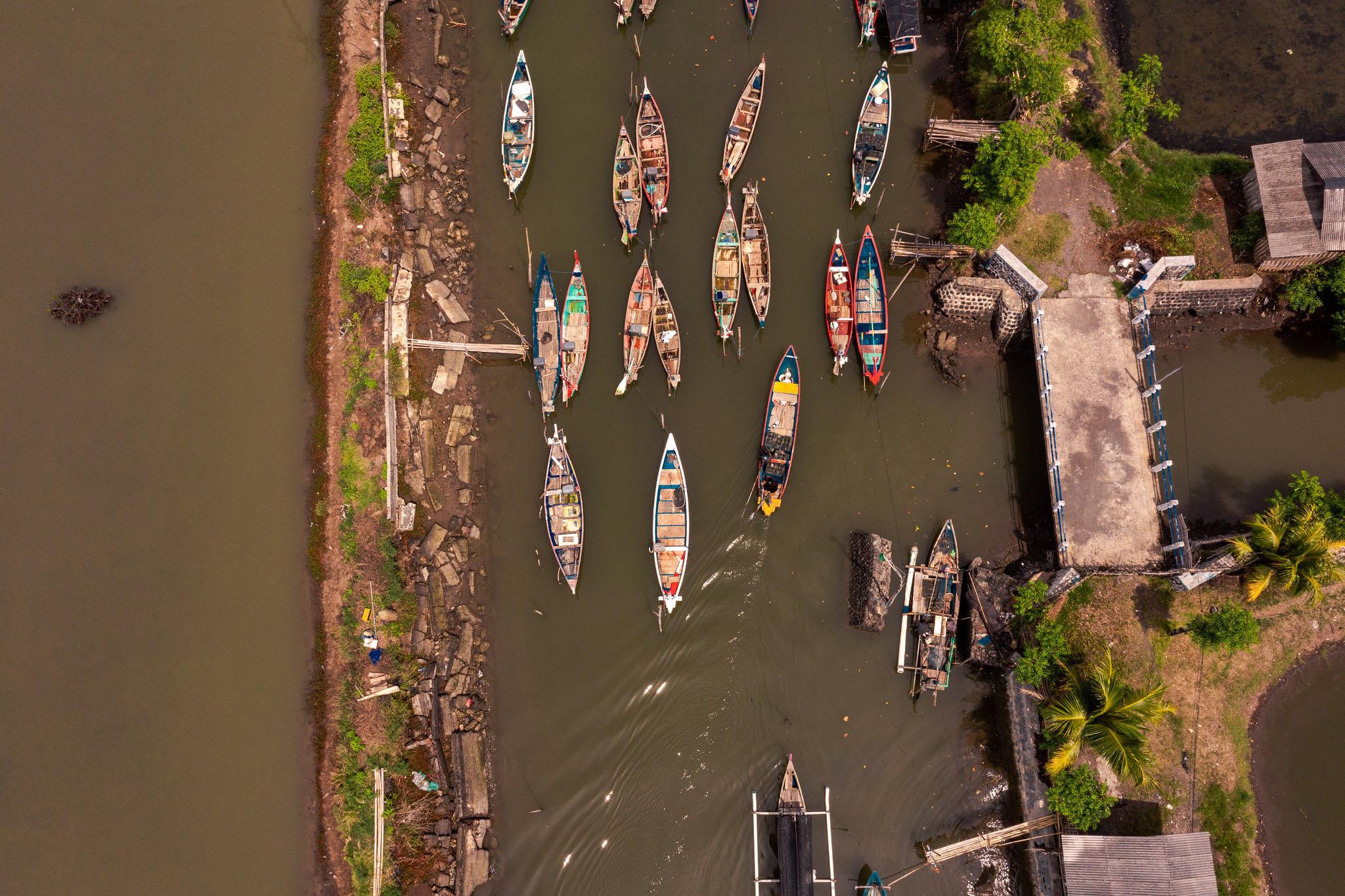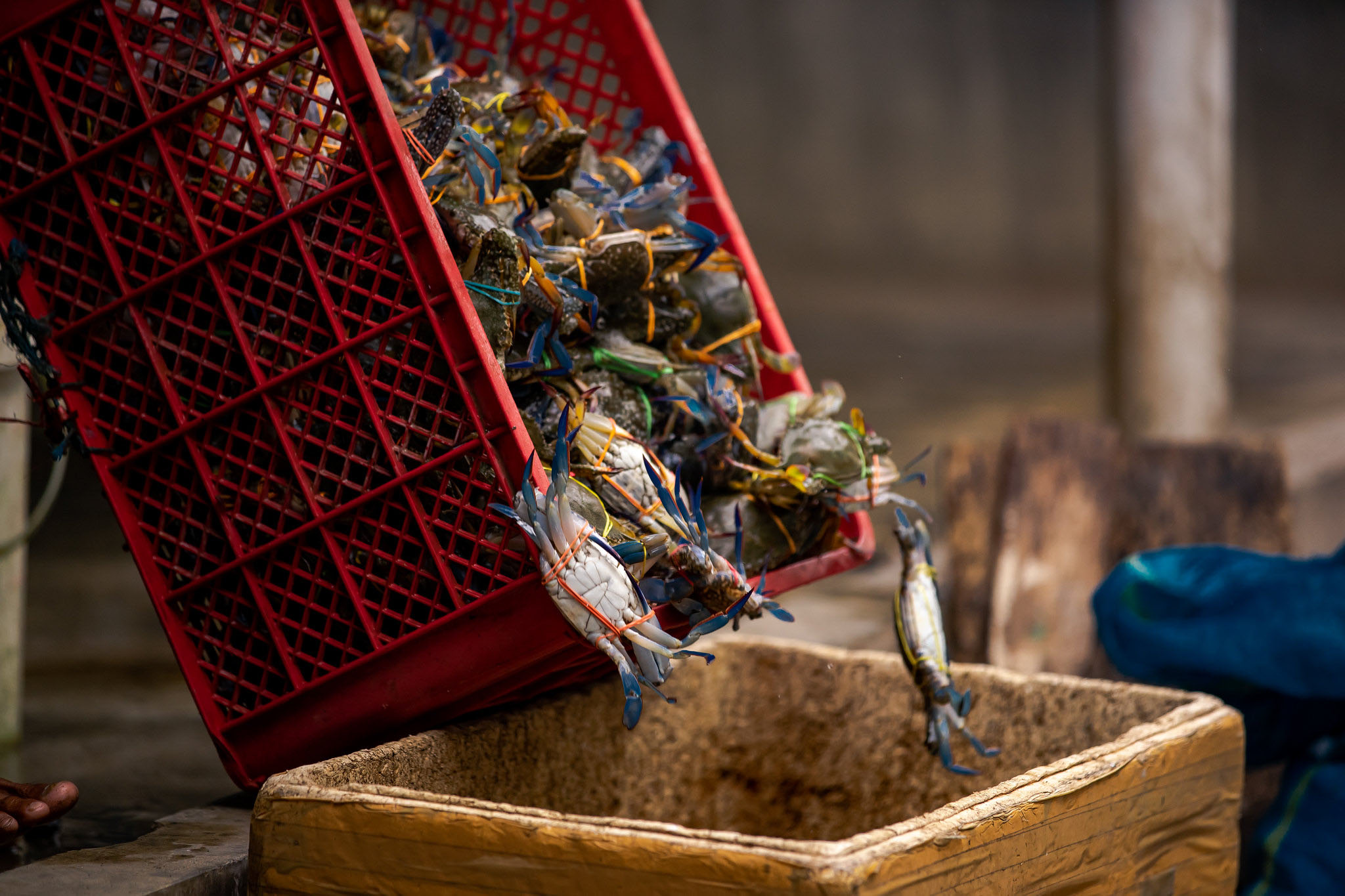We want you to share Forests News content, which is licensed under Creative Commons Attribution-NonCommercial-ShareAlike 4.0 International (CC BY-NC-SA 4.0). This means you are free to redistribute our material for non-commercial purposes. All we ask is that you give Forests News appropriate credit and link to the original Forests News content, indicate if changes were made, and distribute your contributions under the same Creative Commons license. You must notify Forests News if you repost, reprint or reuse our materials by contacting forestsnews@cifor-icraf.org.
Mangroves are finally having a moment. Global recognition is growing of their role as major carbon sinks and the ways they protect coastlines from floods and storm surges. They also harbour a variety of fish and other aquatic animals that support the diets and livelihoods of coastal communities.
Yet in Indonesia, this local biodiversity is threatened when mangroves are cleared for oil palm and, ironically, aquaculture. In fact, in Pangpang Bay on the island of Java, communities that had cleared mangroves to build fish ponds in the 1980s decided to replant them a decade later, when dikes became eroded by the tides and fish stocks declined.
“As mangroves become established, the number and diversity of crabs, fish and other marine biota increase,” said local mangrove activist Hendro Supeno in a video filmed in Pangpang Bay. “Without mangroves, the community’s food stocks and income are reduced.”
To support efforts to conserve and restore degraded mangroves, researchers from the Center for International Forestry Research and World Agroforestry (CIFOR-ICRAF) along with Indonesian partners the University of Diponegoro, Blue Forests, University of 17 August, and Brawijaya University, are gathering evidence of just how much mangroves contribute to local diets and livelihoods.
With support from the David and Lucile Packard Foundation and the United States Agency for International Development, the two-year Restoring Coastal Landscape for Adaptation Integrated Mitigation (ReCLAIM) Project aims to increase the recognition of blue carbon ecosystems and promote evidence-based mangrove restoration.
The project focused on three sites along the coast of Java: protected mangroves in Serang Municipality and Regency, Banten; restored mangroves in Demak Regency, Central Java; and healthy mangroves in Banyuwangi Regency, East Java.
At all sites, a separate team conducted biophysical studies to better understand how degraded mangrove ecosystems affect coastal vulnerability and to identify the potential for restoration.
The nutrition and livelihoods team, led by CIFOR-ICRAF scientists Amy Ickowitz and Mulia Nurhasan, focused on the Demak and Banyuwangi sites. Through socioeconomic and dietary surveys and focus group discussions, they aimed to find out how mangroves support local livelihoods, food security and nutrition.
“Mangroves provide direct, daily benefits to local communities,” said Ickowitz, who has studied the link between trees and nutrition and food security for the last 10 years. “Particularly for poor communities, the nutritional contribution that these fish can make to local diets can be key for preventing malnutrition.”
Fish and other aquatic animals contain high amounts of micronutrients and polyunsaturated fatty acids, which are very important for physical and cognitive development of children. People also eat the leaves and fruit of mangrove trees, which can be processed into flour and other products.
Mangroves provide direct, daily benefits to local communities – Amy Ickowitz,CIFOR-ICRAF scientist
Local community takes the initiative to replant mangroves that had been cleared for aquaculture
Nurhasan echoed the importance of mangroves to dietary diversity, especially for women of reproductive age and children, who tend to be more nutritionally vulnerable than other family members. “Food diversity is related to children’s nutritional status, regardless of socioeconomic factors. Children who eat more animal protein tend to be taller, heavier and have better cognitive abilities,” she said. “Fish consumption has been shown to be associated with better nutritional status, and it is the most important source of animal protein in Indonesia. But Indonesian children are not consuming enough fish.”
This research supports Gemarikan, the Indonesian government’s programme to increase public demand for fishery products and people’s nutritional intake from fish. The government has also taken several actions to reduce the stunting rate in Indonesia. Presidential Regulation 72/2021 stipulates that these should be done in a holistic and integrative manner, with coordination across government agencies from the national to the village level. ReCLAIM embraces such a holistic approach, as findings the food security and nutrition part of the study are used to support mangrove conservation and restoration, and vice versa.
Early evidence from ReCLAIM shows that a significant part of the diet of mothers and children comes from fish and other aquatic animals. Dietary research from the Demak and Banyuwangi sites showed that, on average, 56.5% of mothers and 42% of children had consumed fish within 24 hours before taking the survey.
“When I cook fish, usually my kids are excited to eat,” said Ibu Ririn, a fisher’s wife from Pangpang Bay. “If there are no fish, it’s difficult to feed them.” She doesn’t worry when food prices rise at the market, as she and her family consume much of their catch of fish, crabs and shrimp.
More than 35 percent of the fishers do not own a boat, and 24 percent own small boats (5 horsepower or less). “Fishers do not have to own large boats to fish in the mangrove areas, suggesting that mangroves provide an inclusive livelihood income benefiting those who cannot afford large capital outlays,” said Nurhasan.
Food diversity is related to children’s nutritional status, regardless of socioeconomic factors. Children who eat more animal protein tend to be taller, heavier and have better cognitive abilities – Mulia Nurhasan, CIFOR-ICRAF scientist



Mangroves can be key for preventing malnutrition
Researchers ensured the livelihood and nutrition surveys were designed in a gender-sensitive way, to assess the actual and potential income benefits for both male and female household members. They found that gender dynamics varied by location. In Demak, men do most of the fishing and women work on post-catch activities like sorting, selling and processing fish. But in Banyuwangi, women tend to collect shellfish themselves.
“We earn at least 50 thousand rupiah (around USD 3.4) daily from the oysters we collect from the mangroves,” said Bibit Rahayu in the video from Pangpang Bay.
Eko Siswanto, a local crab fisher, described the effect on local incomes when communities in Pangpang Bay took the initiative to replant mangroves that had been cleared for aquaculture. “In the past, when mangroves were not dense enough, you could earn only 50–60 thousand rupiah per day,” he said. But as they grew more dense they attracted crabs – which allow us to earn more. “Now, our income has risen to 90–100 thousand rupiah, sometimes as high as 300–400 thousand.”

Crabs caught by fishermen in Pangpang Bay, Muncar District, Banyuwangi Regency. Photo by Rifky/CIFOR-ICRAF
Pak Siswanto values the independence he enjoys as an entrepreneur, and he is able to earn a comfortable income without working long hours.
Ibu Bibit echoed the sentiment: “We can work in the factory, but working in the mangroves is more profitable and we have more time with our children.” The smile on her face says it all.
“Siswanto and Ibu Bibit would make excellent emissaries to explain to communities around Indonesia about how restoration of mangroves can benefit local fishers as well as the nation and planet,” said Ickowitz.
Story development : Erin O’Connell | Video production: Aris Sanjaya | Web design: Gusdiyanto | Publication coordination : Budhy Kristanty
We want you to share Forests News content, which is licensed under Creative Commons Attribution-NonCommercial-ShareAlike 4.0 International (CC BY-NC-SA 4.0). This means you are free to redistribute our material for non-commercial purposes. All we ask is that you give Forests News appropriate credit and link to the original Forests News content, indicate if changes were made, and distribute your contributions under the same Creative Commons license. You must notify Forests News if you repost, reprint or reuse our materials by contacting forestsnews@cifor-icraf.org.



